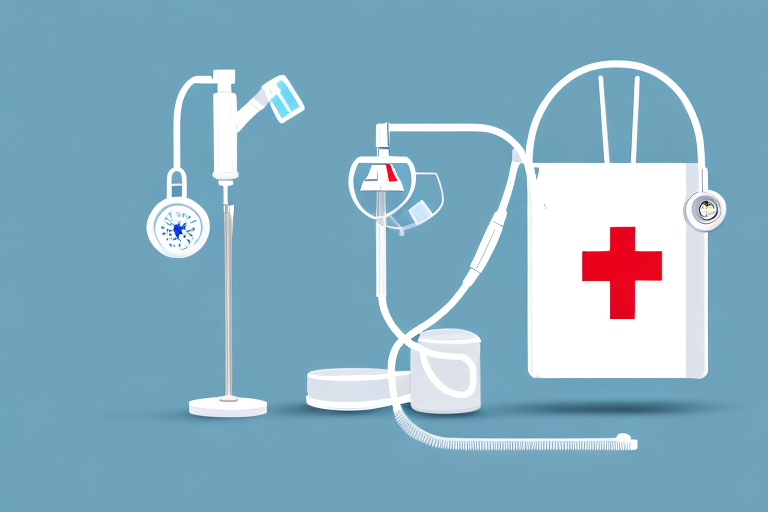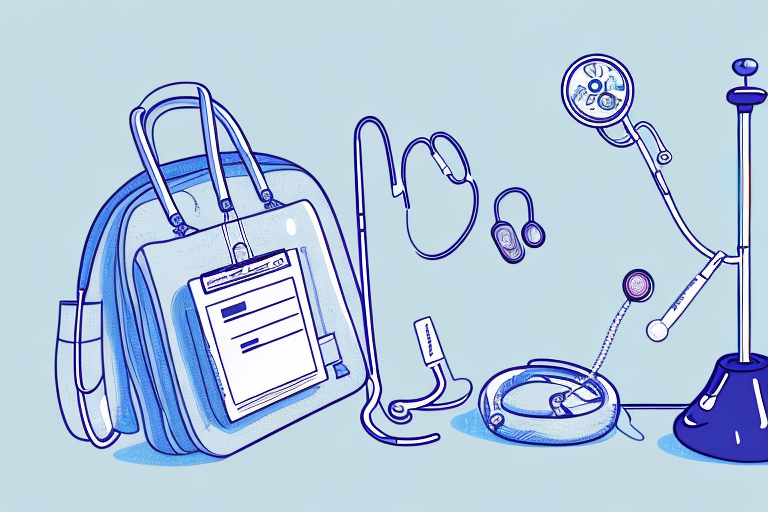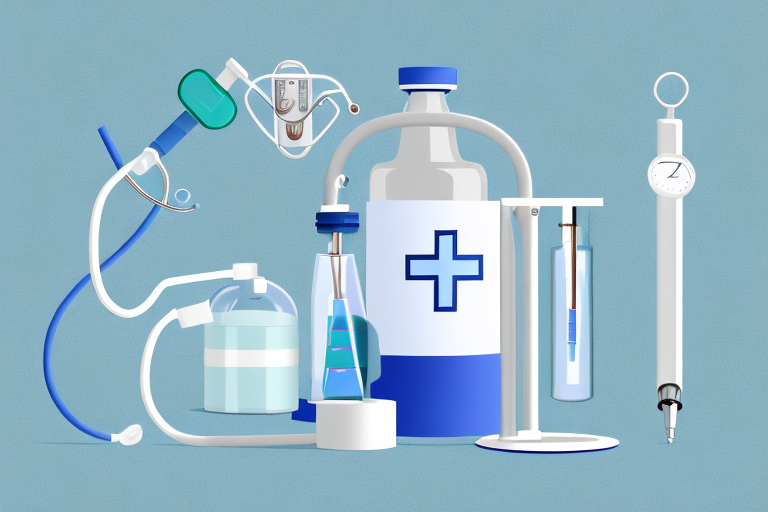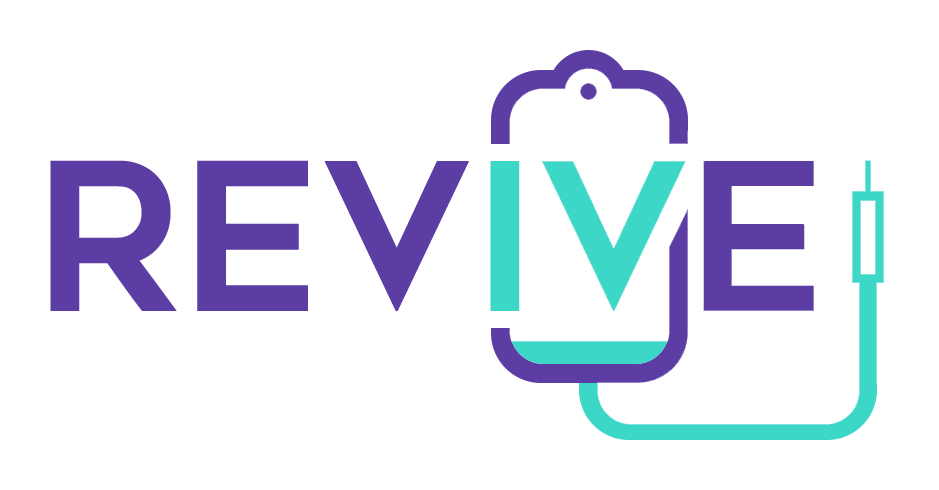Benefits of IV Fluids for Rapid Medical Recovery and Hydration

Intravenous (IV) therapy is a common medical treatment used to provide fluids, nutrients, and medications directly into a patient's bloodstream. Typically, IV fluids are administered through a vein in the arm, but they can also be delivered through other routes, such as intraosseous or central lines. IV fluids provide a fast and effective way to deliver essential substances to the body, bypassing the digestive system and ensuring rapid absorption by the circulatory system.
Understanding Intravenous Fluids
As medical science has advanced, so too has the ability to provide patients with the essential fluids, electrolytes, and medications they need to recover from illnesses and injuries. One of the most common methods for delivering these essential fluids is through intravenous (IV) therapy.
What are IV Fluids?
IV fluids are sterile solutions containing concentrated electrolytes, nutrients, or medications. They are administered to patients in need of rapid fluid replacement, dehydration treatment, electrolyte imbalance correction, blood transfusions, or medication administration. Hospitals, clinics, and other medical facilities commonly use IV therapy to provide patients with essential fluids, electrolytes, and medications.
IV fluids are an essential tool for healthcare providers, as they allow for the precise delivery of fluids, electrolytes, and medications directly into the patient's bloodstream. This method of delivery is particularly useful for patients who are unable to take medications orally or who require rapid treatment.
Types of IV Fluids
There are different types of IV fluids, each with a unique composition and purpose. The most common types of IV fluids include:
- Isotonic solutions: These solutions have the same concentration of electrolytes as the body's fluids, making them effective at maintaining normal electrolyte balance and fluid levels.
- Hypotonic solutions: These solutions have a lower concentration of electrolytes than the body's fluids and work to hydrate cells and replenish fluids in the body.
- Hypertonic solutions: These solutions have a higher concentration of electrolytes than the body's fluids and are used to treat severe dehydration or to pull fluids from swollen tissues.
Your healthcare provider will determine the appropriate type of IV fluid for your specific needs. It is important to note that IV fluids should only be administered by trained medical professionals.
How are IV Fluids Administered?
IV fluids are administered through a vein, typically in the arm, using a needle or catheter. Depending on the patient's needs, the fluids may be delivered through a peripheral IV line, a central line, or an intraosseous line. The IV solution is typically delivered using a gravity drip, which regulates the flow rate, or an infusion pump, which can deliver fluids and medications at precise rates.
During IV therapy, healthcare providers monitor the patient's vital signs and adjust the flow rate as needed to ensure that the patient receives the appropriate amount of fluids and medications. Patients may experience some discomfort during IV therapy, such as a mild burning sensation at the injection site or a feeling of fullness in the veins. However, these side effects are typically mild and temporary.
IV therapy is a safe and effective way to provide patients with the essential fluids, electrolytes, and medications they need to recover from illnesses and injuries. If you have any questions about IV therapy or the types of IV fluids available, be sure to talk to your healthcare provider.

Advantages of IV Fluid Therapy
IV fluid therapy is a medical treatment that involves the delivery of fluids and medications directly into the bloodstream through a vein. It is a common medical intervention used in a variety of settings, including hospitals, clinics, and emergency rooms. The following are some of the advantages of IV fluid therapy:
Rapid Fluid Replacement
One of the primary advantages of IV therapy is that it provides a fast and effective way to replace fluids lost due to dehydration, blood loss, or other medical conditions. IV fluids can be delivered quickly to the bloodstream, hydrating and replenishing the body's fluids and electrolytes faster than oral rehydration therapy (ORT). This is especially important in emergency situations where time is of the essence.
IV therapy is also beneficial for patients who are unable to drink fluids due to medical conditions or surgical procedures. In these cases, IV fluids can provide essential hydration and electrolyte replacement to prevent complications such as kidney failure and electrolyte imbalances.
Accurate Dosing and Control
IV therapy allows for precise dosing and control over the delivery of fluids and medications. The healthcare provider can adjust the flow rate and infusion volume to meet the patient's specific needs, ensuring accurate administration of medications and fluids. This is particularly important for medications that require precise dosing, such as chemotherapy drugs or antibiotics.
IV therapy also allows for the administration of multiple medications simultaneously, which can be beneficial for patients with complex medical conditions. By delivering medications directly into the bloodstream, IV therapy can help to ensure that patients receive the appropriate doses of each medication without any potential interactions or complications.
Bypassing the Digestive System
IV therapy bypasses the digestive system, allowing for direct delivery of medications and nutrients to the bloodstream. This avoids potential absorption issues or problems with medication metabolism that can occur with oral administration. Additionally, IV therapy provides immediate effects, bypassing the need for digestion and absorption that can delay the onset of action.
IV therapy is particularly beneficial for patients with gastrointestinal issues or those who are unable to take medications orally. By bypassing the digestive system, IV therapy can ensure that patients receive the full benefits of their medications without any potential complications or delays.
Improved Patient Comfort
IV therapy can provide enhanced patient comfort by avoiding the need for frequent needle sticks or oral medication administration. For patients who are unable to take oral medications or fluids, IV therapy can ensure adequate hydration and medication administration without discomfort, nausea, or vomiting.
Additionally, IV therapy can be administered in a variety of settings, including inpatient and outpatient settings, which can help to improve patient comfort and convenience. By providing essential fluids and medications directly into the bloodstream, IV therapy can help patients to feel more comfortable and at ease during their medical treatments.

Common Medical Applications of IV Fluids
IV (intravenous) therapy is a medical treatment that involves delivering fluids and medications directly into a patient's bloodstream through a vein. This method of treatment is commonly used in a variety of medical applications, including:
Dehydration Treatment
Dehydration occurs when the body loses more fluids than it takes in. This can happen due to vomiting, diarrhea, blood loss, or excessive sweating. Severe dehydration can lead to serious complications, such as kidney failure or shock. IV fluids can help replenish fluids and electrolytes lost due to dehydration, preventing these complications from occurring. The fluids used in IV therapy typically contain a balanced amount of sodium, potassium, and glucose to help restore the body's electrolyte balance.
Electrolyte Imbalance Correction
Electrolytes are minerals in the body that help regulate various bodily functions, such as muscle contractions and heart rhythm. Certain medical conditions, such as kidney disease or hyponatremia (low sodium levels), can cause electrolyte imbalances that can lead to serious health complications. IV fluids can quickly and effectively correct electrolyte imbalances by delivering the necessary minerals directly into the bloodstream.
Medication Administration
IV therapy is an effective method for delivering medications directly into the bloodstream. This can be particularly useful in emergency or critical care situations, where rapid absorption is essential to patient outcomes. IV medication administration can also bypass potential absorption issues that may occur with oral medications, ensuring that patients receive the full dose of medication they require.
Blood Transfusions
IV therapy can also be used to deliver blood transfusions to patients in need. Blood transfusions are commonly used to treat anemia, severe blood loss, or other medical conditions that require a boost in blood volume or oxygen transport capacity. IV fluids are used to deliver the blood directly into the patient's bloodstream, ensuring that it reaches the necessary organs and tissues quickly and effectively.
Overall, IV therapy is a versatile and effective medical treatment that can be used in a variety of applications. Whether treating dehydration, correcting electrolyte imbalances, administering medications, or delivering blood transfusions, IV therapy can help improve patient outcomes and prevent serious health complications.
Potential Risks and Complications
IV therapy is a common medical procedure used to deliver fluids, medication, and nutrition directly into the bloodstream. While it is generally considered safe and effective, there are potential risks and complications associated with this treatment. It is important for patients to be aware of these risks and for healthcare providers to take necessary precautions to minimize them.
Infection
One of the most significant risks associated with IV therapy is the possibility of infection. If the equipment or delivery site is not properly sanitized, bacteria can enter the bloodstream and cause serious complications, including sepsis or blood poisoning. To minimize the risk of infection, healthcare providers take necessary precautions to ensure proper sanitization of equipment and follow proper infection control protocols. Patients can also take steps to reduce their risk of infection by keeping the IV site clean and reporting any signs of infection, such as redness, swelling, or fever, to their healthcare provider.
Air Embolism
Another potential complication of IV therapy is air embolism, a condition that occurs when air bubbles enter the bloodstream and obstruct blood flow to vital organs. This can be a life-threatening condition and requires prompt medical attention. Healthcare providers carefully monitor IV lines for any air bubbles and remove them promptly to prevent this complication. Patients can also help prevent air embolism by avoiding sudden movements or changes in position during IV therapy.
Fluid Overload
IV therapy can also lead to fluid overload, a condition that occurs when the body is unable to remove excess fluids. This can happen if the infusion rate or volume is too high, or if the patient has an underlying medical condition that affects fluid balance. Symptoms of fluid overload can include swelling, breathing difficulties, and changes in blood pressure. Healthcare providers monitor fluid intake and adjust the infusion rate and volume as necessary to prevent this complication.
Phlebitis and Infiltration
Phlebitis and infiltration are conditions that can occur when the veins become inflamed or the IV fluid leaks into surrounding tissues. These conditions can cause pain, swelling, and impaired circulation. Healthcare providers carefully monitor IV lines for signs of phlebitis or infiltration and remove the line or adjust the infusion as necessary. Patients can also help prevent these complications by reporting any pain or discomfort at the IV site to their healthcare provider.
Overall, IV therapy is a safe and effective treatment option for a wide range of medical conditions. By understanding the potential risks and complications associated with this treatment, patients can work with their healthcare providers to minimize these risks and ensure the best possible outcome.

The Future of IV Fluid Therapy
Advances in IV Fluid Technology
The future of IV fluid therapy is likely to involve technological advances that improve patient outcomes and reduce risks. For example, some researchers are working on developing IV fluids with enhanced nutrient content or with additives that improve healing or disease management.
One promising area of research is the development of IV fluids that contain antioxidants. These fluids could help to reduce inflammation and oxidative stress in patients with chronic diseases, such as diabetes or heart disease.
Another area of research is the development of IV fluids that contain probiotics. These fluids could help to improve gut health in patients who have undergone surgery or who are receiving antibiotics, which can disrupt the natural balance of bacteria in the gut.
Expanding Applications in Medical Treatment
As healthcare professionals become more familiar with the benefits and risks of IV therapy, the applications of IV fluids are expanding into new areas of medicine. For example, IV therapy may be used to manage chronic diseases, such as cancer or cystic fibrosis, or to enhance nutritional support in malnourished patients.
IV therapy is also being used in some cases to administer medication. This can be particularly useful in emergency situations, where a patient may not be able to take medication orally or where a medication needs to be delivered quickly.
Another area where IV therapy is being explored is in the treatment of mental health conditions. Some researchers are investigating the use of IV ketamine for the treatment of depression and other mood disorders.
Improving Patient Outcomes with IV Fluids
As IV fluid therapy becomes more widely used and better understood, healthcare providers can anticipate improved patient outcomes through faster, more effective treatment of dehydration, electrolyte imbalances, and other medical conditions. While there are risks associated with IV therapy, appropriate selection and monitoring of patients can minimize these risks and maximize the benefits of this valuable medical treatment.
One way that healthcare providers are improving patient outcomes with IV therapy is by using advanced monitoring systems. These systems can track a patient's fluid intake and output, as well as their electrolyte levels, to ensure that they are receiving the appropriate amount of fluids and nutrients.
Another way that healthcare providers are improving patient outcomes is by using IV therapy in combination with other treatments. For example, IV fluids may be used in conjunction with antibiotics to treat infections, or with chemotherapy to manage the side effects of cancer treatment.
Overall, the future of IV fluid therapy looks promising, with new technologies and applications being developed all the time. As healthcare providers continue to explore the potential of IV therapy, patients can expect to benefit from faster, more effective treatment and improved outcomes.










